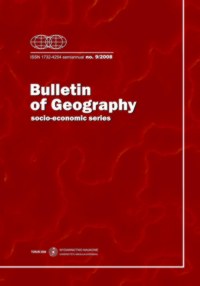The socio-spatial structure of post-socialist Łódź, Poland. Results of national census 2002.
DOI:
https://doi.org/10.1515/2431Keywords
social polarization, dual city, ŁódźAbstract
Growing social and spatial segregation, stemming from the mounting social polarization, is not only limited to Western cities. Currently, it is widely acknowledged that the aforementioned processes have become a salient feature of post-socialist cities and regions. Unfortunately, available data portraying this phenomenon in the CEE states were primarily gathered in capital areas. Exposed to social and economic globalization from the early stages of political transformation, those urban settings constitute rapidly developing hubs of growth, significantly differing from 'second-tier' cities. This contribution seeks to examine if the processes shaping the social and urban fabric of global cities and post-socialist metropolises are comprehensible in the residential structure of Łódź. Deploying quantitative methods the paper presents a detailed spatial analysis of Łódź's socio-spatial differentiations. The synthetic typology and the resulting model of residential structure summarize the contribution.
Downloads
Published
How to Cite
Issue
Section
License
Title, logo and layout of journal Bulletin of Geography. Socio-economic Series are reserved trademarks of Bulletin of Geography. Socio-economic Series.Stats
Number of views and downloads: 585
Number of citations: 0



